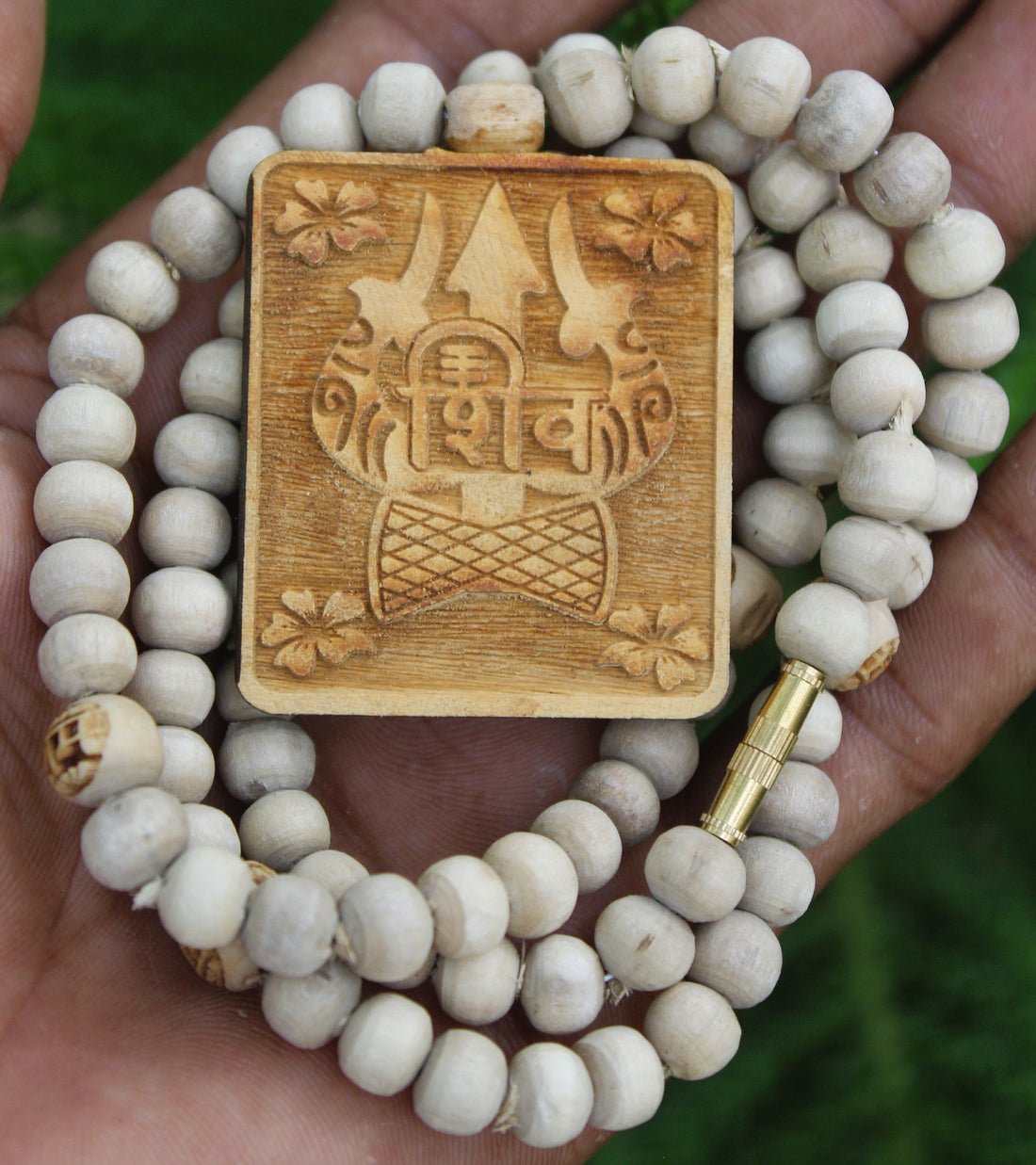
How to Identify Genuine Tulsi Mala?
Share
The Tulsi Mala holds profound spiritual value in Hinduism, where it is revered as a sacred garland used in meditation, mantra chanting, and devotion to Lord Krishna and Vishnu. Unfortunately, the rising demand for Tulsi Malas has also led to an influx of fake or adulterated products in the market. Knowing how to identify an original Tulsi Mala is essential for spiritual seekers who want to receive its full spiritual and healing benefits.
In this detailed guide, we’ll explore the features, tests, and buying tips for finding a genuine Tulsi Mala—along with recommended authentic malas you can buy from trusted sources.
What is a Tulsi Mala?
A Tulsi Mala is a sacred rosary made from the stems or roots of the Tulsi plant (Ocimum sanctum), also known as Holy Basil. It is especially used for chanting the Hare Krishna Maha Mantra, meditation, and as a protective spiritual ornament. The natural purity of Tulsi wood makes it a symbol of devotion, purity, and divine connection.
If you’re looking for an authentic and blessed Tulsi Mala, explore:
- 🌿 Blessed Tulsi Wood Mala for Peace and Spiritual Growth
- ✨ Organic Tulsi Beads Mala for Mind, Body & Soul
Why Identifying a Genuine Tulsi Mala is Important
A real Tulsi Mala is more than just an accessory—it carries spiritual vibrations and offers multiple benefits:
- Spiritual Benefits – Helps focus during meditation, deepens devotion, and enhances mantra chanting.
- Healing Properties – Known for its antimicrobial and purifying effects.
- Religious Significance – Symbolizes devotion to Lord Vishnu and Krishna.
Using a fake Tulsi Mala—often made from plastic or ordinary wood—means forfeiting these benefits and potentially compromising spiritual discipline.
Key Features of a Genuine Tulsi Mala
1. Material Authenticity
- Texture – Smooth yet organic wooden texture.
- Color – Natural cream or pale white; darkens slightly over time.
- Fragrance – Emits a mild, earthy scent when rubbed.
Check out this Original Authentic Tulsi Kanthi Mala for reference:
🛒 Original & Exquisite Tulsi Kanthi Mala for Devotion
2. Bead Shape and Craftsmanship
- Hand-Carved Nature – Slight variations in bead size and shape.
- Natural Imperfections – Proof of organic origin.
3. Lightweight Feel
Tulsi wood is naturally light, making the mala comfortable for long-term wear and chanting.
4. Reaction to Water
Real Tulsi beads absorb water and slightly darken when wet. Fake beads (plastic/synthetic) repel water and remain unchanged.
Simple Tests to Check Tulsi Mala Authenticity
1. Water Test
Soak the mala for a few minutes—real beads darken, fakes remain the same.
2. Scratch Test
Lightly scratch a bead—real Tulsi reveals a wooden texture and aroma, while fakes show plastic or painted surfaces.
3. Heat Test
Hold a bead close to a flame briefly—real Tulsi chars but doesn’t melt, fake beads release a plastic smell.
4. Aroma Test
Rub a bead—genuine Tulsi gives a distinct earthy fragrance.
Types of Fake Tulsi Malas to Avoid
- Plastic Imitations – Overly polished, uniform, no fragrance.
- Ordinary Wooden Beads – Painted to mimic Tulsi but lacking spiritual value.
- Synthetic Resin Beads – Lightweight yet inauthentic.
How to Buy a Genuine Tulsi Mala
- Buy from Trusted Sources – Opt for sellers who specialize in spiritual products.
- Check Authenticity Claims – Look for sourcing details and customer reviews.
- Avoid Extremely Cheap Deals – Crafting a genuine Tulsi Mala requires effort; excessively low prices can signal fakes.
For safe and genuine purchases:
Caring for Your Tulsi Mala
- Clean Gently – Use a soft cloth or lukewarm water.
- Avoid Chemicals – Keep away from perfumes and soaps.
- Store Respectfully – Place in a clean, sacred space when not in use.
Conclusion
A genuine Tulsi Mala can be a life-changing spiritual tool, helping you connect more deeply with the divine, improve your focus, and protect you from negativity. By learning how to identify an authentic Tulsi Mala, you ensure your devotion remains pure and your spiritual practices remain effective.
If you’re ready to start with a 100% authentic mala, explore:
